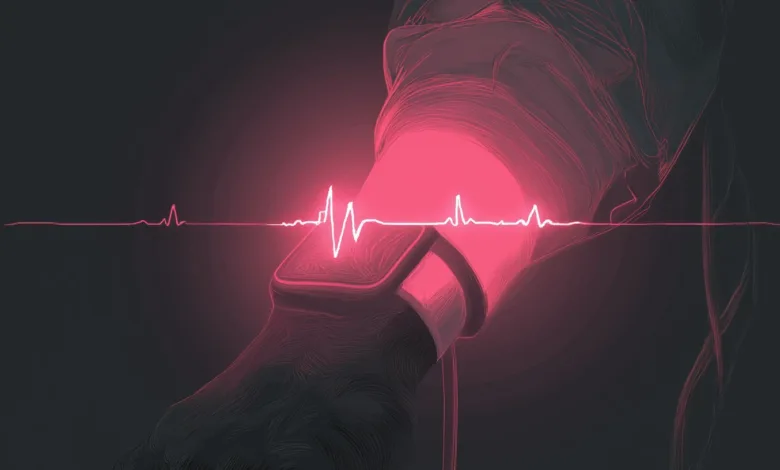Who Else Has Access to Your Wearable’s Heartbeat Data?

▼ Summary
– Remote monitoring devices help detect health changes early but create new security vulnerabilities by expanding access points for potential attacks.
– Wearable health data ownership is unclear, with companies often selling anonymized information to third parties despite user privacy concerns.
– Recent incidents show device failures and cybersecurity gaps can directly harm patients, such as insulin pump shutdowns or manipulated medical signals.
– Global supply chains for medical devices concentrate manufacturing risks, with documented cases of hidden backdoors in equipment from specific regions.
– Healthcare organizations should manage wearables as part of medical IoT by implementing network segmentation, encryption, authentication, and regular risk assessments.
The rise of smartwatches, glucose sensors, and connected drug-monitoring devices is transforming patient care by enabling remote health tracking and personalized treatment plans. These tools provide clinicians with a continuous stream of valuable health information, allowing for early detection of changes in a patient’s condition. However, this constant flow of sensitive data also creates new and significant security vulnerabilities that must be addressed.
As healthcare increasingly moves beyond the traditional hospital setting, confidential patient information now travels across complex digital networks. Very few organizations possess the capability to monitor these data pathways from start to finish, creating blind spots that security leaders find deeply concerning. Eric Demers, CEO of Madaket Health, highlighted the severity of the situation, pointing to the catastrophic potential of malicious attacks on remote patient monitoring devices or smart medical equipment directly connected to an individual. He stressed that the industry’s technological progress inherently multiplies the number of access points available for potential exploitation.
A pressing question for many users is who ultimately owns the health data generated by their wearable devices. These gadgets collect intimate details like heart rate, glucose levels, and physical activity, creating a constant data stream that passes through multiple systems. Every handoff in this chain presents an opportunity for interception or misuse. Many people are unaware of how extensively their data is shared beyond the device itself. It often travels to the manufacturer, and in numerous cases, companies legally sell anonymized health data to third parties such as advertisers and research groups. This practice, while typically within legal bounds, sparks serious debates about personal privacy and user control.
For hospitals, this ambiguity creates compliance risks. If a wearable device transmits patient information to a cloud service not covered by specific health privacy regulations, the healthcare provider might still be held liable for a data breach, even if the data never touched their own servers. Regulatory bodies are taking notice. The Federal Trade Commission’s 2024 update to the Health Breach Notification Rule now explicitly includes health apps and wearables that operate outside the scope of HIPAA. This expansion means companies handling wearable data must inform users and regulators of any security breaches, regardless of their status as traditional healthcare entities.
Research has uncovered that sensitive health data passing through many Android healthcare apps receives minimal protection. Some applications transmit information without encryption, store files insecurely, and share data via vulnerable third-party components.
The risks extend far beyond data privacy. Unauthorized access to a device or even a simple system failure can lead directly to patient harm. In one alarming incident, over 220 people with diabetes were injured when a connected iOS app repeatedly crashed. The malfunction caused the app to drain the battery of paired insulin pumps, leading to an early shutdown and a dangerous halt in insulin delivery. This was a case of a technical fault, not a cyberattack, demonstrating how quickly a device failure can impact human life.
In a separate demonstration of vulnerability, cybersecurity researchers used low-cost tools to perform attacks on Bluetooth Low Energy medical wearables. They successfully executed Man-in-the-Middle, data manipulation, and disruption attacks on devices like ECG monitors and oximeters, intercepting and altering the signals between the wearable and its mobile application.
The expansion of remote patient monitoring relies on a vast ecosystem of connected medical devices, each with components sourced from a global supply chain. This network introduces hidden risks, as every sensor, chip, and software module comes from various vendors. A significant portion of key components, including processors and wireless modules, are manufactured or assembled in a single geographic region, creating concentrated security and geopolitical vulnerabilities.
A case from early 2025 involving Contec’s CMS8000 patient monitors illustrates this problem. U.S. agencies reported that these bedside monitors contained hidden backdoors and hard-coded connections to servers in China. While not wearables, these devices show how security flaws introduced during manufacturing can go undetected and infiltrate critical healthcare systems.
To counter these threats, IT and security teams must integrate healthcare wearables into their broader medical Internet of Things management strategy. Every device handling health data should adhere to the same stringent security protocols applied to other connected systems. This includes comprehensive tracking, consistent patching, and strict enforcement from the initial deployment.
A practical defense starts with a thorough understanding of the current landscape. By learning how attacks, such as data interception or firmware tampering, are executed, teams can concentrate their defenses on the most critical areas. Reviewing existing controls for encryption and anomaly detection often reveals where protections are insufficient.
Conducting a formal risk assessment is crucial for identifying how attackers might target wireless connections, device firmware, or cloud services. Teams can then prioritize these risks based on their likelihood and the potential severity of their impact on patient privacy and safety.
Network segmentation is a highly effective tactic, as it contains the spread of any potential attack. Isolating healthcare wearables and their gateways on separate networks, continuously monitoring traffic for unusual patterns, and rigorously vetting vendors before device deployment are all essential steps. Routine security reviews can uncover weaknesses long before they are exploited.
Finally, all data moving between devices, applications, and cloud servers must be protected with strong encryption. Implementing robust authentication and multi-factor authentication for every connection helps seal the small security gaps that frequently escalate into major incidents.
(Source: HelpNet Security)





